Page 1 of 1
Y junction (not T) signals
Posted: Fri Mar 24, 2017 3:20 pm
by Avezo
I am having problem with setting up proper signals for Y junction (or whatever letter it should be). I am trying to set it up the same way as it should be for T junction like here
http://i.imgur.com/AZAEnUb.png
The problem is, there is not enough space for both normal and chain signals, see below:
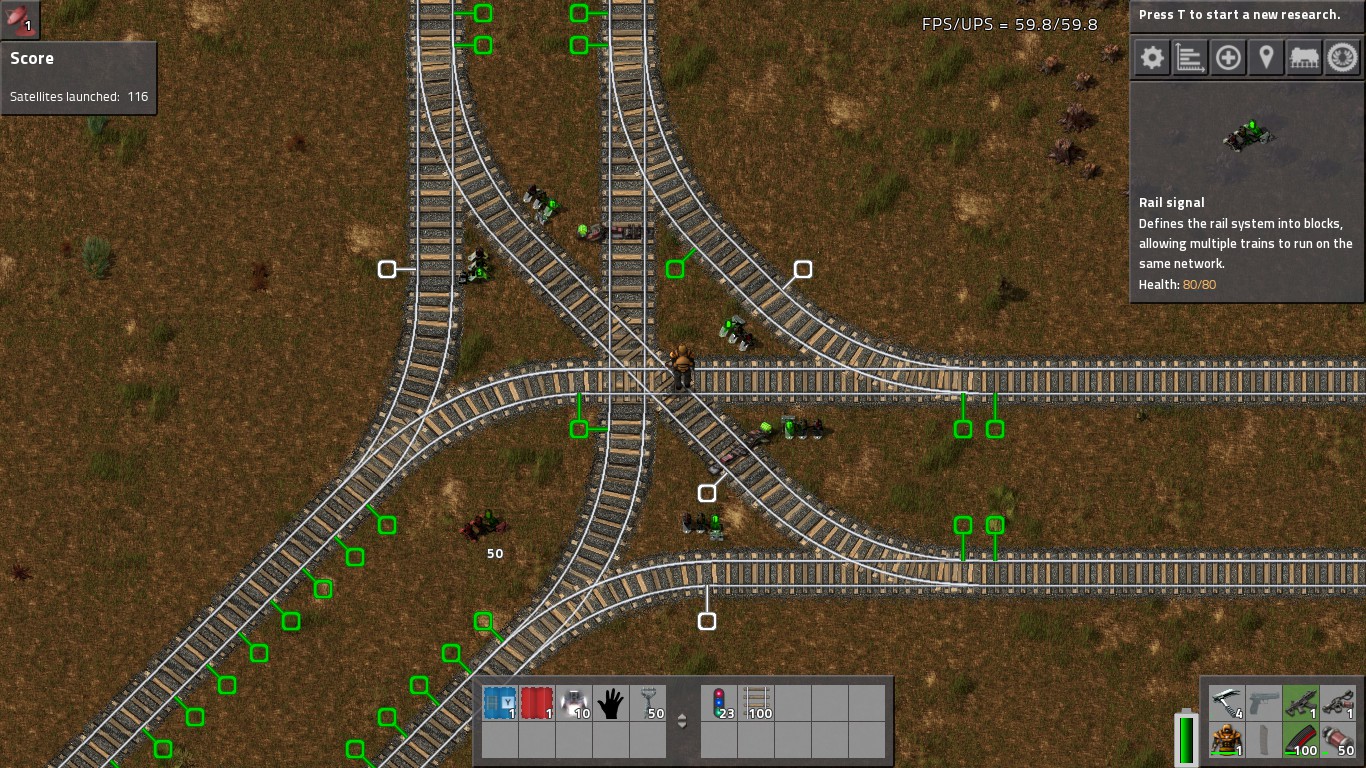
This is junction layout I need.
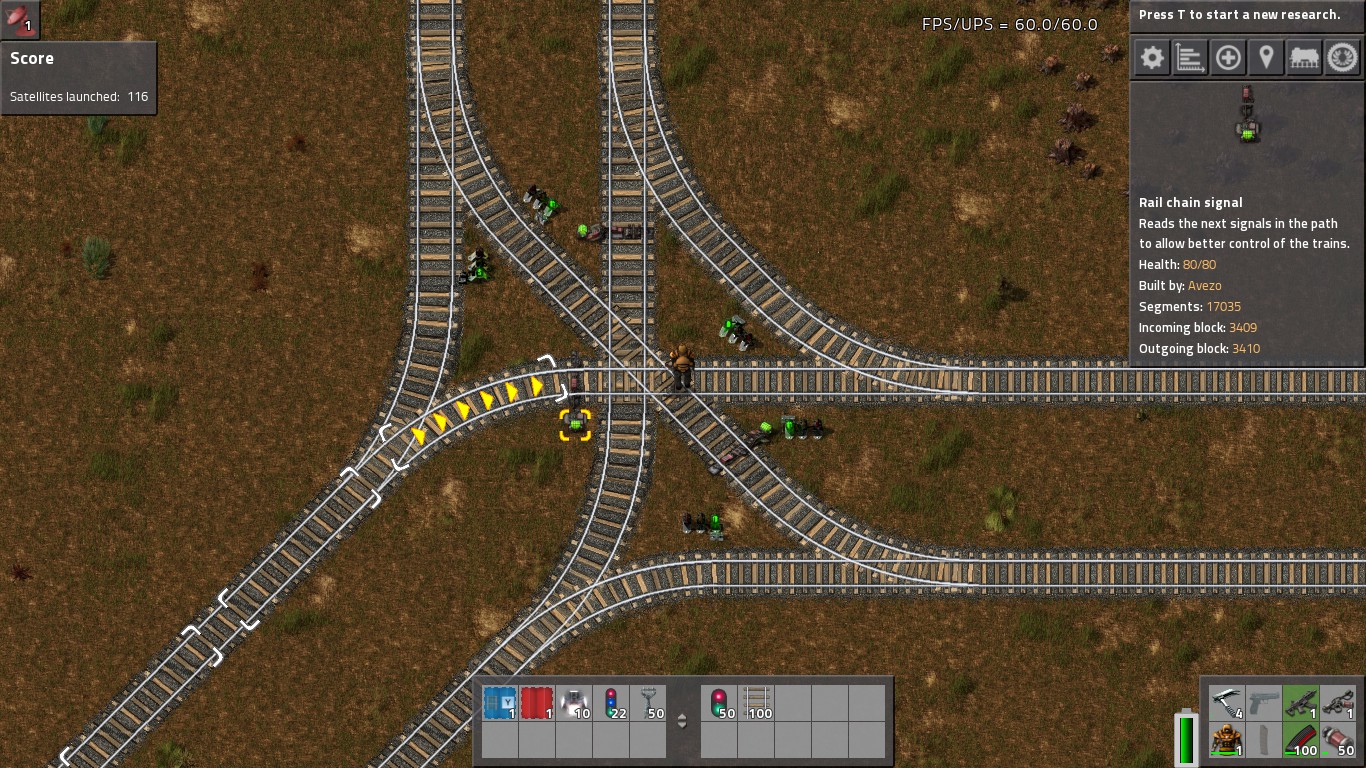
This is where chain signal has to be.
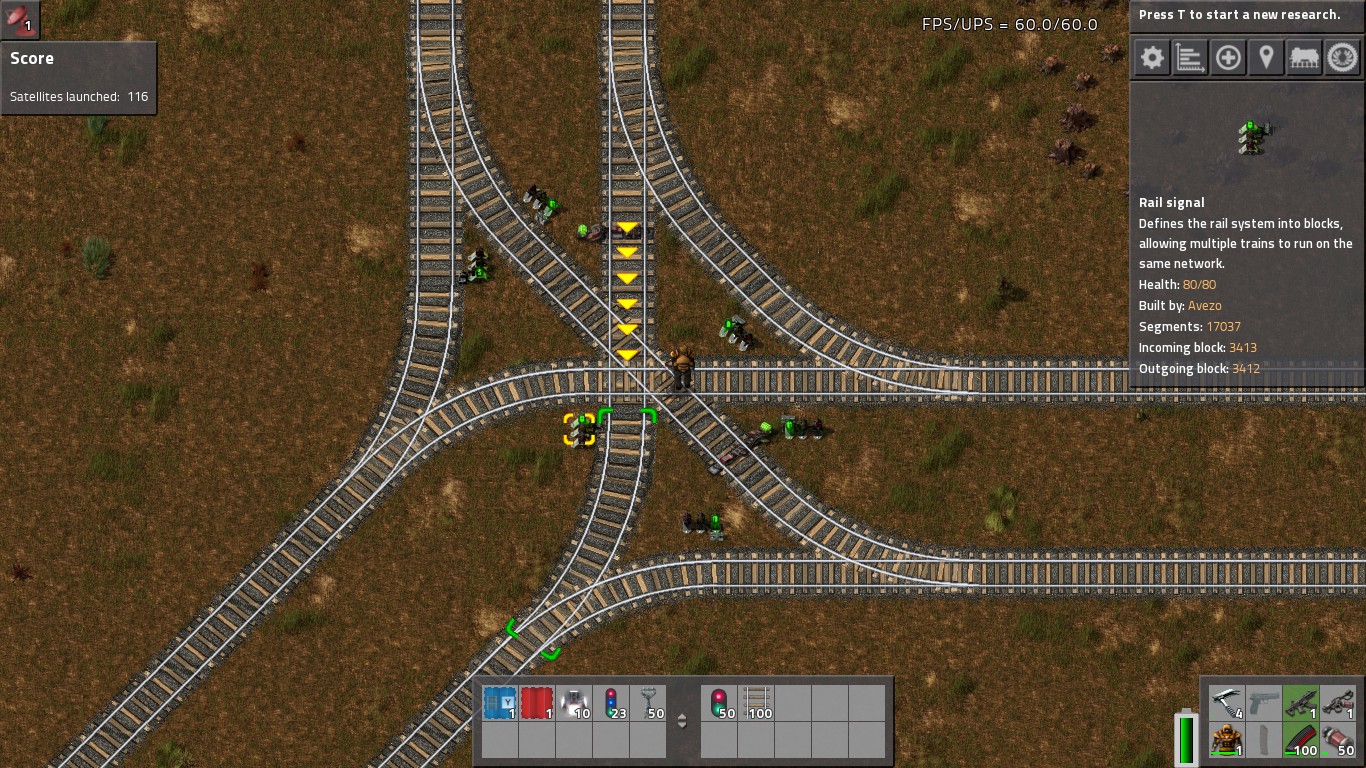
This is where normal signal has to be.
How to solve this without doing rail spaghetti to make room for another light?
Re: Y junction (not T) signals
Posted: Fri Mar 24, 2017 4:58 pm
by Kelderek
There are probably a few things you can try. My advice may not be 100% accurate since I don't run my tracks in a similar fashion (my trains go the opposite direction so my signals end up on the outside of a pair of tracks instead of the inside), but here are a few ideas:
1. Try moving the southbound-to-eastbound curve a little further down, maybe that would change the space available (see my dotted line).
2. Convert the whole thing to a true T junction (assuming you have a layout for that with working signals) and just apply a curve immediately after. This will depend on the space available.
3. Try moving the chain signals before the splits and the rail signals after the merges (see below). I think it would function the same, this is generally how I do my signals and they work for me.
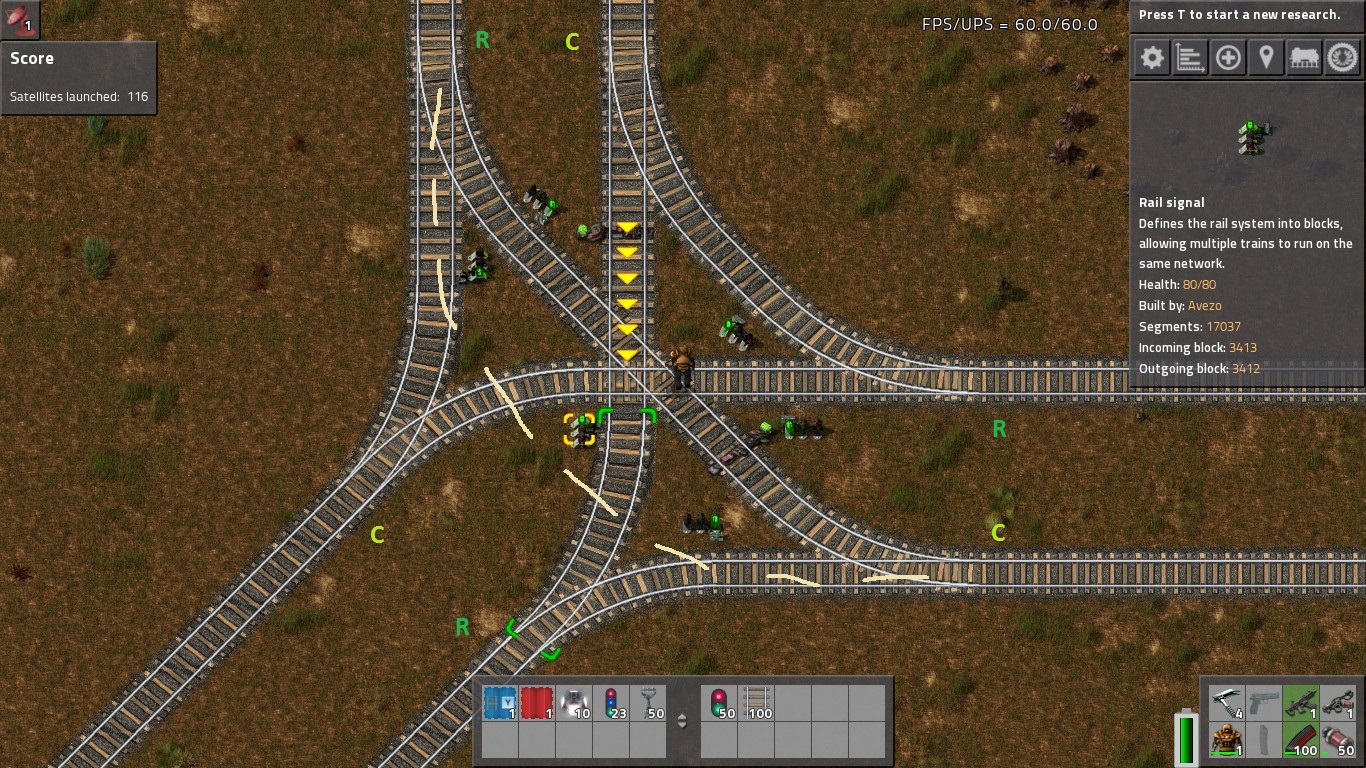
Like I said, I don't run my tracks this way so I may be entirely wrong, lol.
Re: Y junction (not T) signals
Posted: Fri Mar 24, 2017 9:36 pm
by Frightning
There are two ways to approach this. Easiest would be to move the turns from N to E (and vice versa) to the NE a bit to give room. The 2nd option is to take a closer look at the intersection and ask which parts of it actually need to be separate blocks in order to always allow non-crossing traffic through.
Re: Y junction (not T) signals
Posted: Sat Mar 25, 2017 8:21 pm
by AileTheAlien
I find it easier to build railway if you use USA rules, instead of UK rules. (USA: Drive on the right, oncoming traffic on the left; UK: drive on the left, oncoming traffic on the right.) It makes the rail lines tighter together, since the signals go on the outside instead of between my two lanes of traffic. Actually, I think it also ends up with less tracks crossing each other in each intersection too. Maybe it's just an optical illusion, but it certainlly looks cleaner to me. If you want to convert, here's a compact layout for you, so you don't have to rip up your entire railway network:
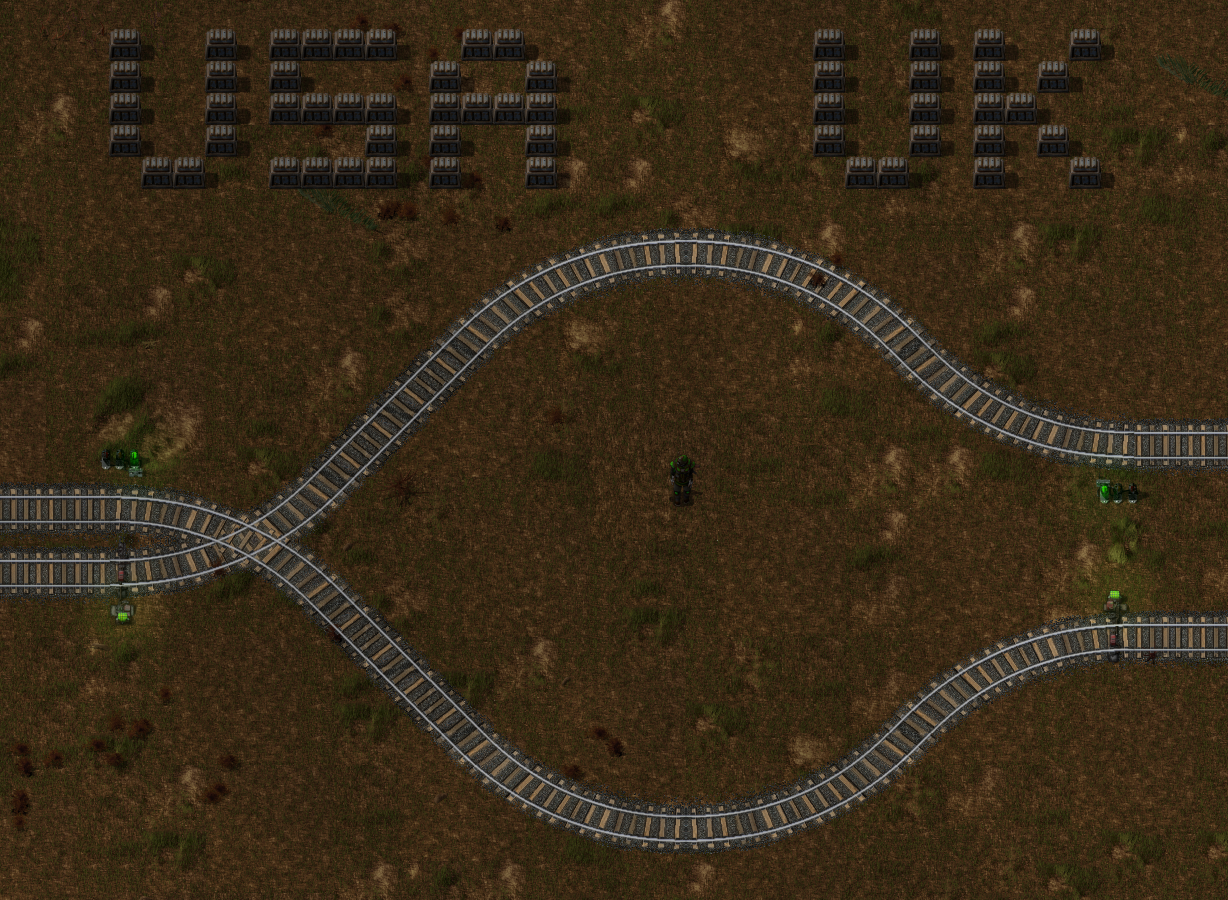
- usa-uk-crossover.png (2 MiB) Viewed 11161 times
If you don't have very high throughput, this intersection will work. It only allows a single train in it, even if two trains wouldn't cross paths, which would make it inappropriate for high-throughput railways:
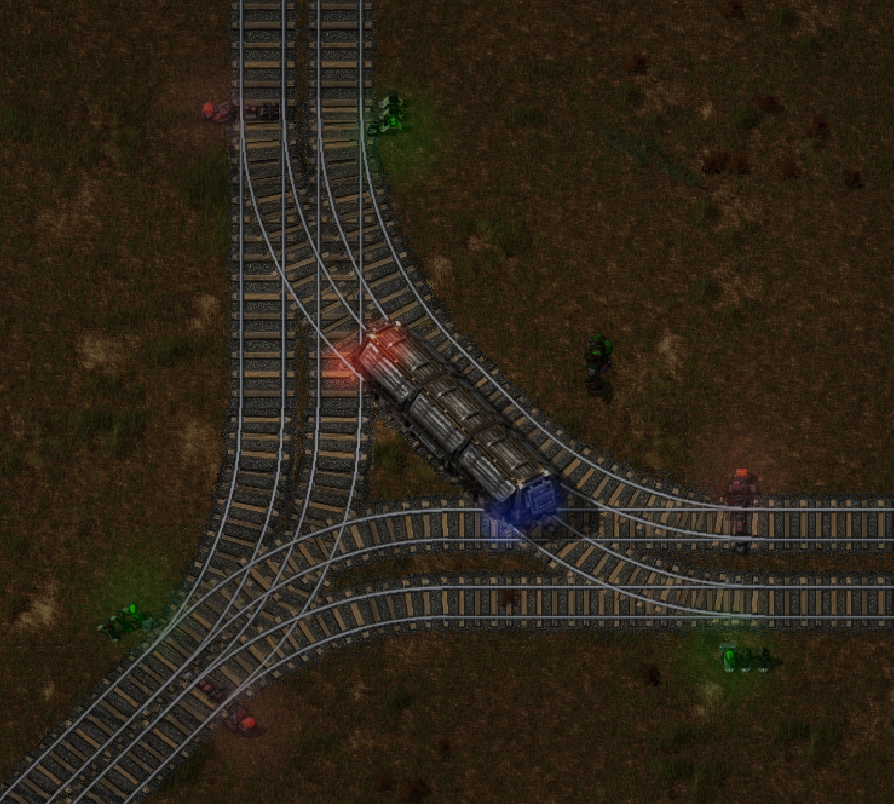
- y-intersection-blocking.png (1.05 MiB) Viewed 11161 times
You also seem to have a bit of room in your screenshot, so I would suggest just making the entire thing an intersection that incorporates a loop in it. Then your trains can not only make turns, but also turn around. In fact, they can enter and exit going any direction. This is the style I use, with a NE-SW set of lines:
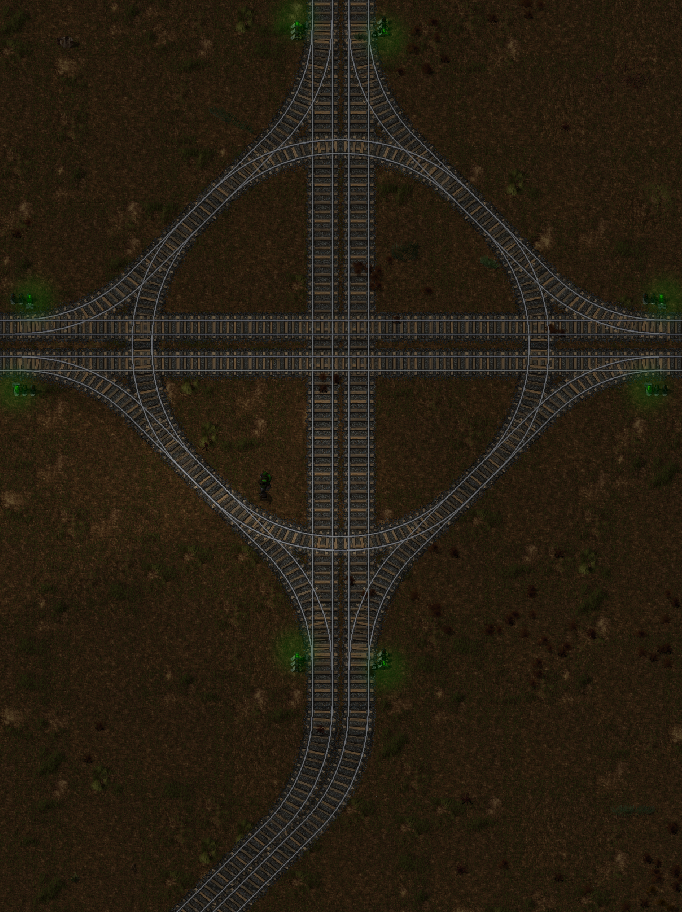
- intersection-plus-loop-USA-curving-to-SW.png (1.11 MiB) Viewed 11154 times
Re: Y junction (not T) signals
Posted: Sat Mar 25, 2017 8:42 pm
by steinio
lol USA rules...
You mean 'not UK rules'
Re: Y junction (not T) signals
Posted: Sat Mar 25, 2017 8:51 pm
by AileTheAlien
steinio wrote:lol USA rules...
You mean 'not UK rules'
Actually, according to
this website, and
this website, there's at least 10 countries on each side of the road. Since the USA and Britain/UK/England* were some of the earliest global powers with these road rules, and are still easily recognizable, that's what I chose to use.
I actually live in Canada and drive on the right, like the USA, so...whatever. It's almost as brief to say "right-side rules" vs "left-side rules", but either way, it's visible what I meant from the screenshots. Also, CANADA would have taken more steel chests than I had in my inventory.
* Yes, I know there's a distinction, but if you're simply talking about "left side of the road" or "right side of the road", the other person will probably understand what you meant - that place/country/whatever with the royalty, instead of the country that rebelled against the royalty.
Re: Y junction (not T) signals
Posted: Sat Mar 25, 2017 9:40 pm
by AileTheAlien
Upon further research, roundabouts are apparently easy to set up:
- make a circle
- add your entrance and exit rail lines
- exits get signals
- entrances get chain signals
- if you want it to be non-blocking (more than 1 train in the intersection) add chain signals to the triangle parts around the circle
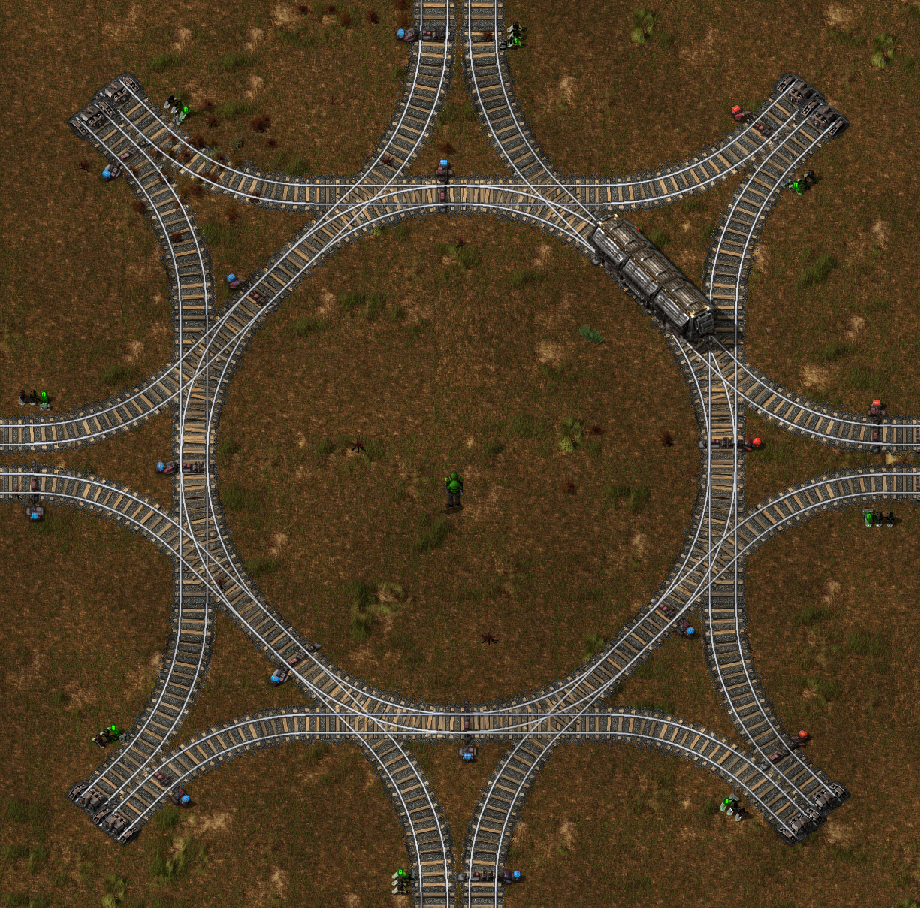
- eight-way-roundabout.png (1.8 MiB) Viewed 11150 times
They also allow for either one-way two-track rail, or two-way one-track rail to enter or exit the roundabout - note the original image from
this reddit post.
According to
this guy in the same thread they won't deadlock as long as your trains are < 10 length (including the engine units). I only ever use 1-engine-4-cargo trains, so I think I'm good to start replacing all my gross intersection-plus-loop things with proper roundabouts.
Re: Y junction (not T) signals
Posted: Sat Mar 25, 2017 9:56 pm
by Avezo
Maybe I should've mentioned it at start, but this is all meant for zero-loop train network. Otherwise I'd just use roundabouts all around ;p
I were wondering about swithing to right-side driving, but with trains it just looks so nice to have signals inside the rail block when it's left-side drive.
Re: Y junction (not T) signals
Posted: Sat Mar 25, 2017 11:17 pm
by AileTheAlien
You need to spread out your triangles:
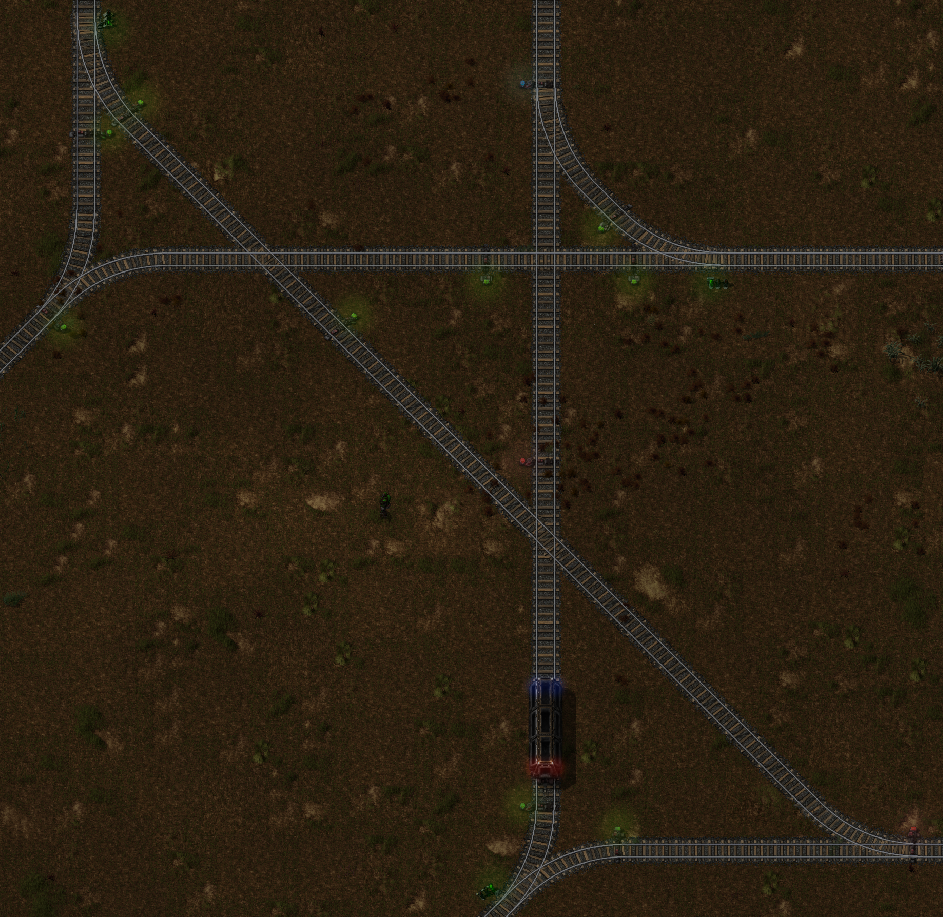
- y-junction.png (1.55 MiB) Viewed 11138 times
I leave it as an exercise for the reader, to prove that they can be made symmetric, that right-side and left-side rules take up roughly equal space, and that it's impossible to have a non-blocking (2 or more trains in the intersection) intersection without spreading everything out.
If you don't want to spread everything out, see my original low-throughput (1 train in intersection at a time) y-junction in this thread.
Re: Y junction (not T) signals
Posted: Tue Mar 28, 2017 5:49 pm
by Avezo
Alright I think I've managed to get this as spaghetti-less as possible. First I've tried to set signals for wider tracks, I think they will work without any reduction for throughtput:
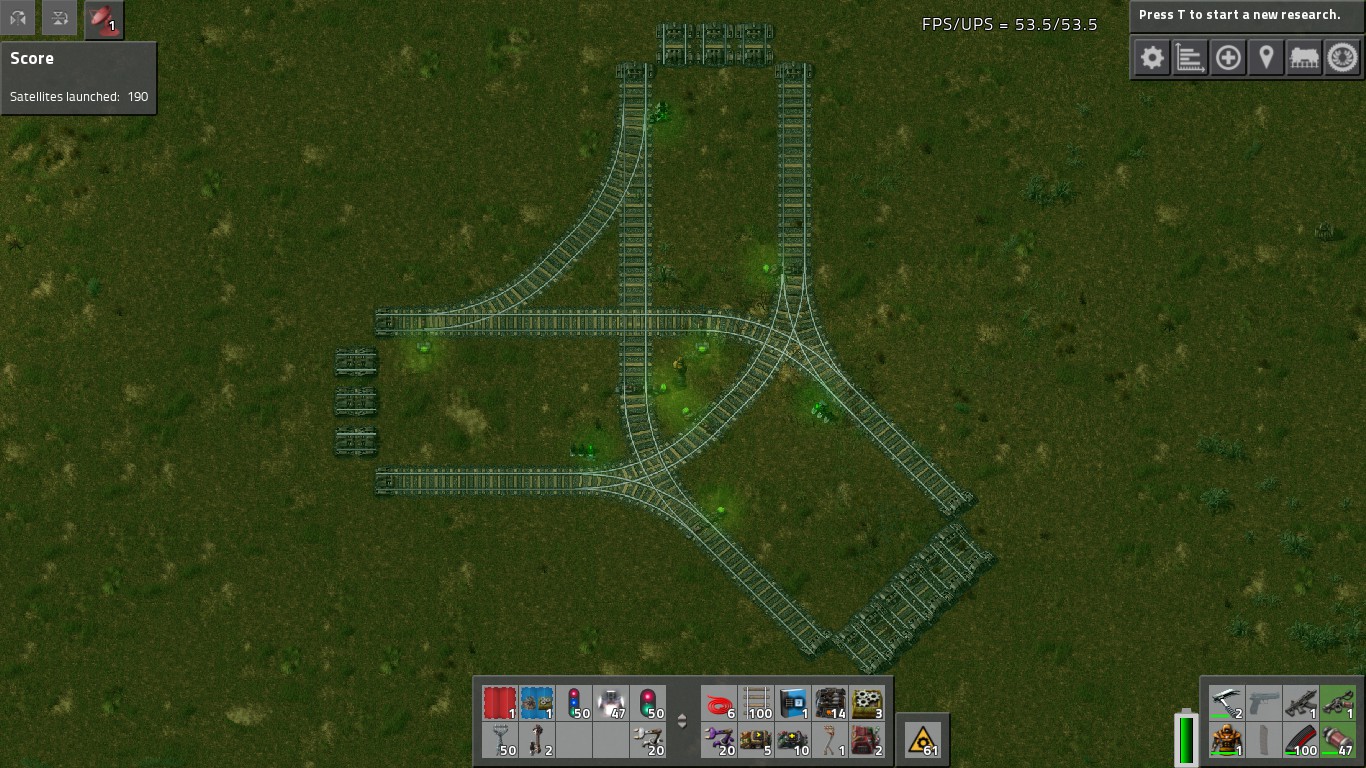
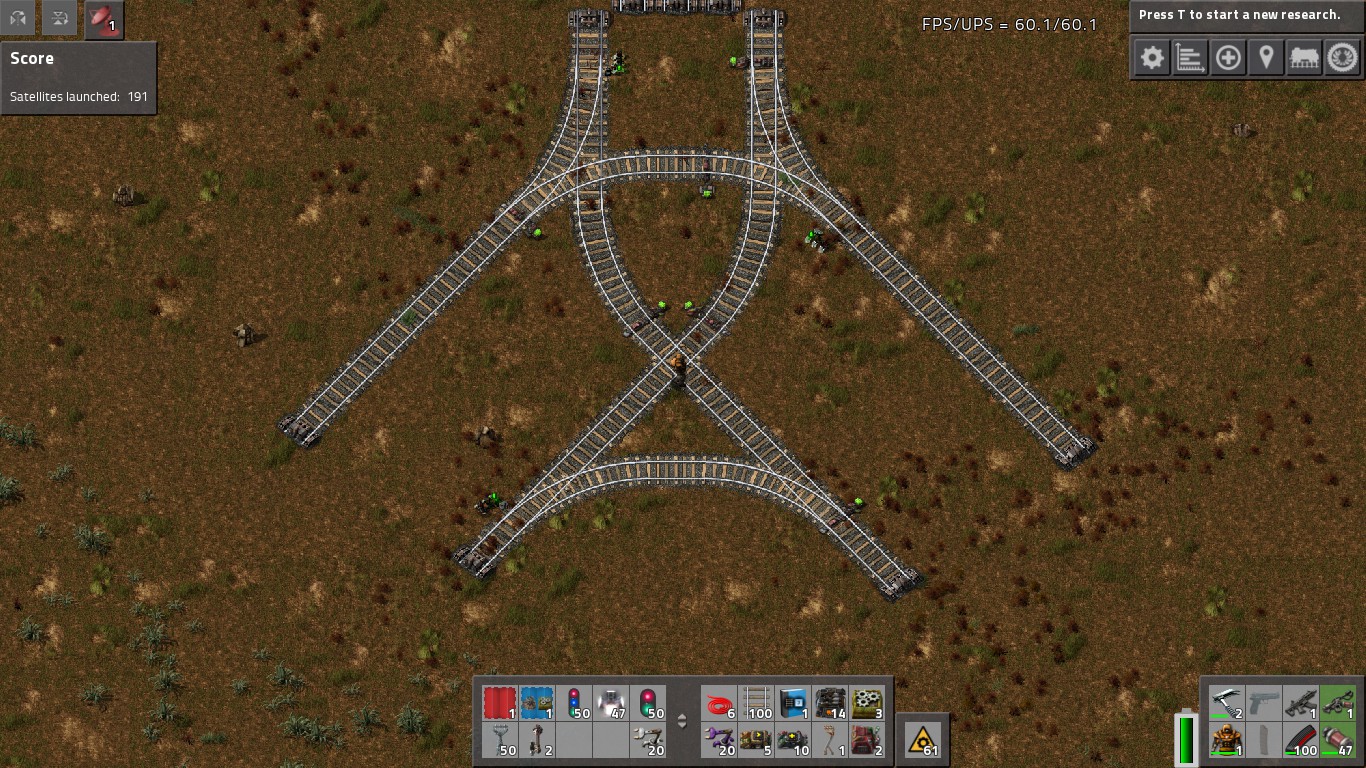
Then I've tried to minimise it to standard 2-rail wide tracks with moving outer arc further away, but there weren't enough room for lights inside the traingle (HOWEVER, if it was right-hand drive system there would be!):
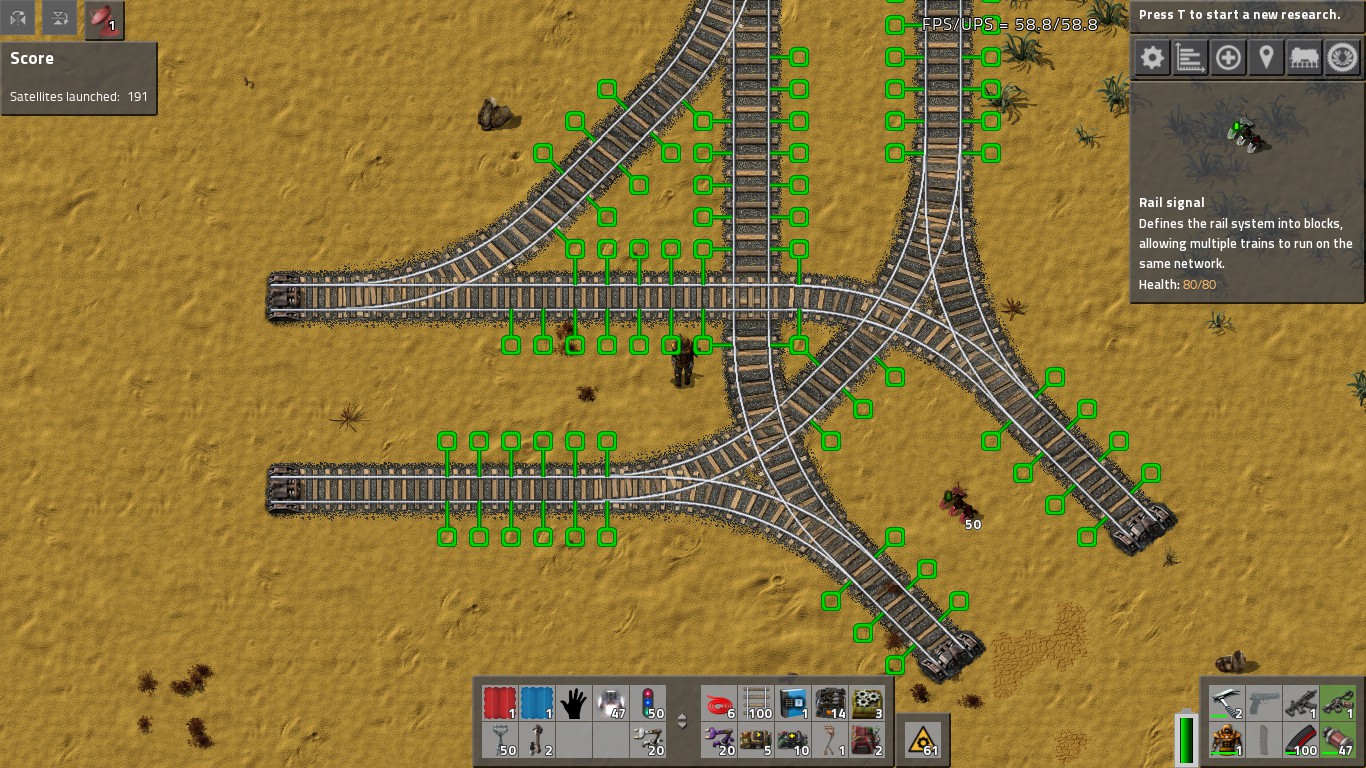
So, in the end I expanded inner area a bit, causing 'spaghettiness' for some turns, but I think it won't get better than that with left-hand driving:
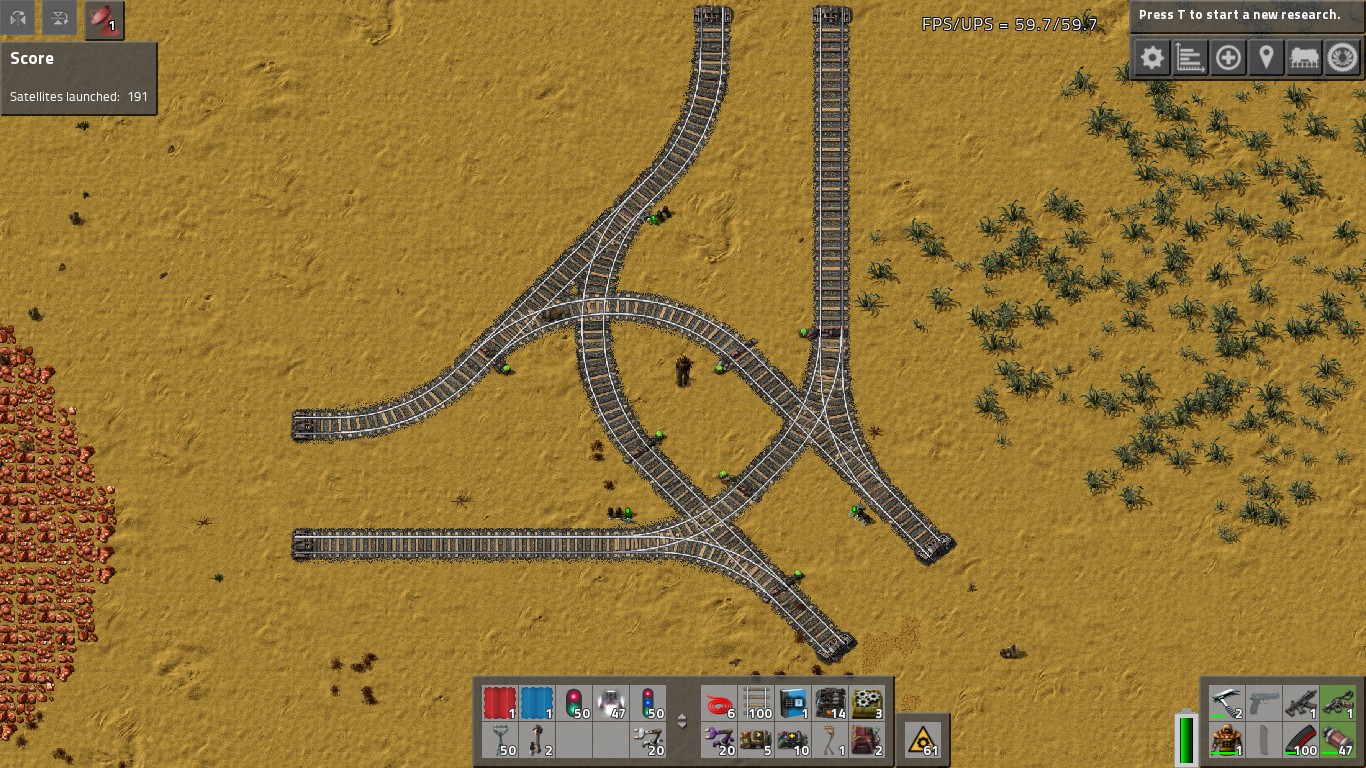
To be honest I might switch to right hand drive for that. I would really appreciate if someone took a look at these signals wheter they won't cause locks, it's a bit different signalling than on 'standard' T-junction that I know of.
Re: Y junction (not T) signals
Posted: Wed Mar 29, 2017 10:33 am
by Engimage
When designing a random intersection follow these several simple rules with which you will never get it wrong:
1. An intersection should have a normal signal on all exits
2. There should be a chain signal on every entrance
3. To optimize a bit you should cut your intersection by chain signals between opposing rails in the most used directions. This is to prevent red lights caused by non-intersecting routes through it. Think of chain signals like they are scissors cuts on your rails. While you can separate routes this way they won't mess up with each other causing excess train stops.
This is not perfect at all situations but it will always work. There are more complex solutions for multirail intersections which do include normal signals inside the intersections. But such designs come only from really in-depth knowledge and experience on the matter.










